A brief history of Calverton
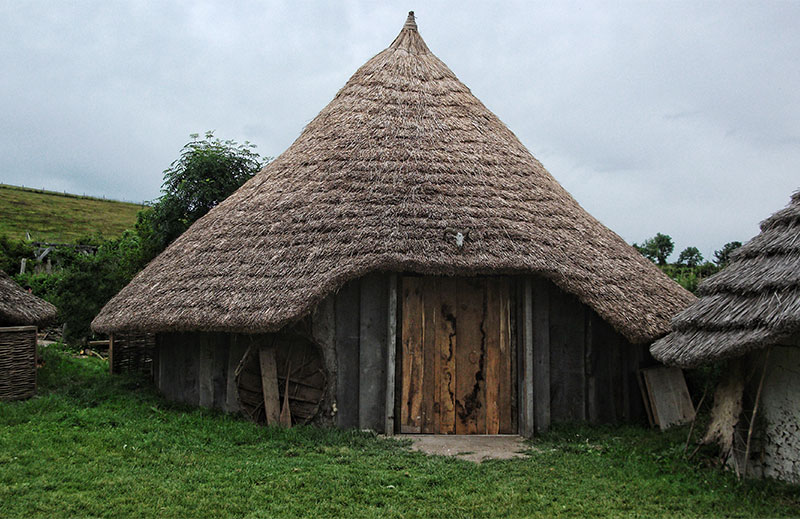
In the period immediately before the Romans invaded, a small settlement of tribal people known as the Catuvellauni was developed at the southern end of the parish. Their small hamlet of circular huts, paddocks and drove ways emphasise their mainly pastoral lifestyle.
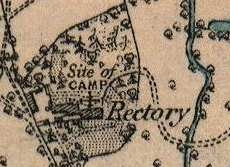
Roman Period Roman material has been found in several locations and there were probably significant Roman sites around Calverton House where Roman spear heads and pottery were found and there is evidence of a Roman farm in the north-west where the parish abuts Beachampton. Severe economic decline would have set in with the withdrawal of Roman support circa A.D. 410 which led to the eventual abandonment of the majority of Romanised sites and a return to small hamlets and individual farm holdings.
The Saxons Some of the woodland cleared during the iron-Age & Roman periods appears to have been become re-established during the early Saxon period. Recent evidence has been found of a Saxon graveyard in the northern corner of the original parish close by Watling Street but as yet no associated Saxon village has been found. By 900 AD the country was divided into separate kingdoms and large areas of the north-east were subjugated to Danish and Viking rule. This area of Buckinghamshire was part of the kingdom of Mercia with numerous farms and small hamlets but few if any large villages.
Early Settlements In the Manor of Calverton four separate communities developed – Lower Weald, Middle Weald and Upper Weald with Stony Stratford following later. Lower Weald appears to have been the site of the principal Manor as this was the location of the future parish church. The early development of Stony Stratford (west) at the junction of Watling Street and the ford crossing the River Great Ouse was as a ‘daughter’ settlement of Lower Weald, as were the settlements of Middle Weald and Upper Weald. The location of Lower Weald may have been determined by a possible north-east to south-west Saxon track that was a partial ridge route linking the Saxon towns of Newport Pagnell and Buckingham. Much of this route has disappeared and can only be traced as footpaths on early Ordnance Survey maps.
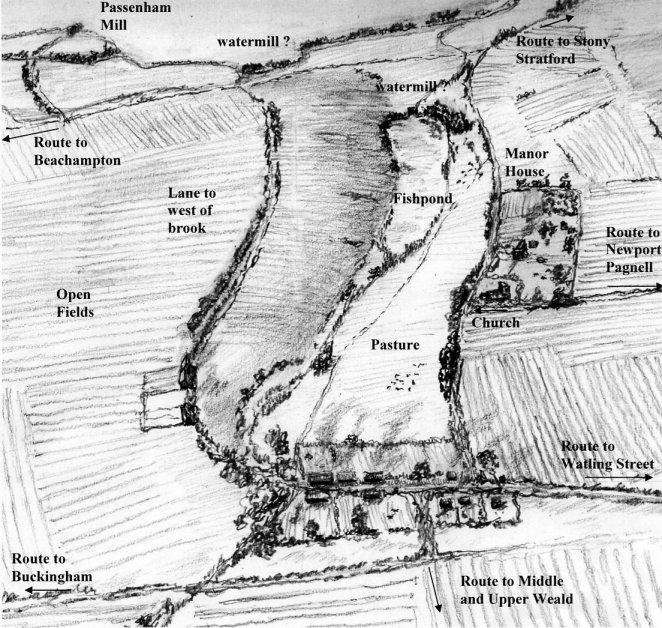
In Wolverton the route was called ‘Green Lane’ and in Lower Weald it was called ‘Gib’ or ‘Jib Lane’ This section of trackway was possible a pack-horse route in the 17th century. The church of All Saints was located at the junction of this lane and the route leading from Stony Stratford to Middle and Upper Weald which differed from the present road layout as it passed through the grounds of the Manor House. Lower Weald village houses were situated on the lower section of the east-west lane leading to Watling Street and former lane to the west of the brook (see reconstruction drawing of circa 1550 (see left)).
Sections of both these routes now only survive as footpaths. A stream rising from a spring to the south of the church follows the lane to Calverton Brook. Although this provided an early source of water to some of the housing it also meant that the area was prone to flooding which resulted in the footpaths being raised above the level of the road and stream.
The Enclosures During the medieval period the arable land was dispersed in the West Field, Street Field and Middle Field and there was a large common when the parish abuts Shenley Church End. Enclosure of parts of the open field system commenced in the 1670’s and was completed with an Act of Parliament in 1782. At enclosure most of the new fields were or were changed to pasture which preserved the extensive remains of ridge and furrow created by medieval ploughing in the three open fields.
Calverton Manor The stone built Manor house has dominated Lower Weald from at least the 15th century and was built just north of the early road into the village from Stony Stratford.
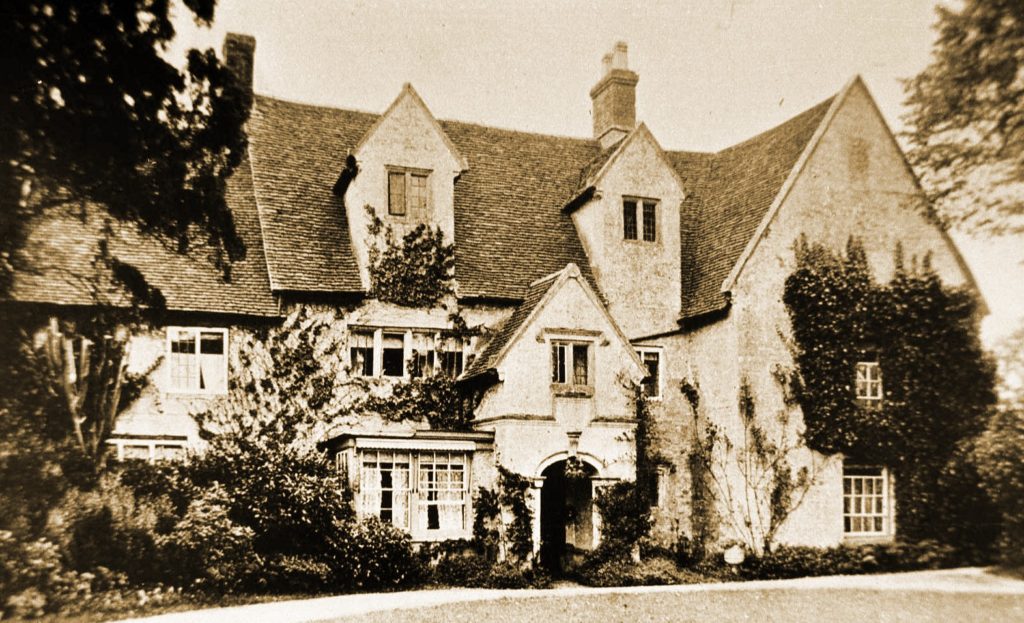
This was a cadet manor of the de Vere family whose main residence was at Castle Hedingham in Essex.
In the valley to the west of the Manor can be seen the remaining earthworks of a dam which held back the Calverton Brook to create a large manorial fishpond which was used as a fish farm (see drawing above). The dam may also have been the site of a water mill and the field where the pond was located is still called Pond Close.
It was the probable enlargement of the Manor Grounds that resulted in the diversion of the road into Lower Weald to its present course. Cottages fronting onto the diverted road indicate that this took place before the end of the 17th century.
The Rectory About 1806, the advowson of the church was acquired by Charles George Perceval, Lord Arden, of Arden, Warwickshire. The foundations for the new rectory were laid in 1819 on the west side of Calverton brook and in 1821 it was occupied the Hon. Rev. Charles Perceval, son of Lord Arden, who had been made rector of the newly rebuilt church.
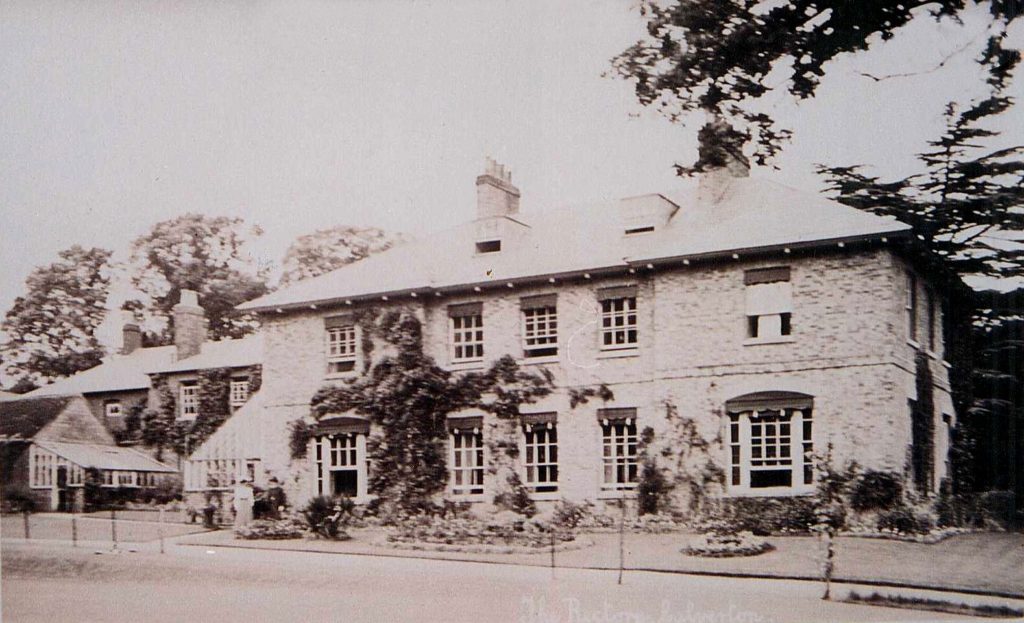
This large austere brick Rectory had its own walled fruit garden and was surrounded by a significant area of parkland enclosed by a stone wall. It was probably when the Park was created that the route to the west of Brook ceased to be used as a roadway and became downgraded to a footpath.
The Rev. Perceval was responsible for building the Almshouses for 6 poor people in 1830 and the village school in 1857.
Industry & Commerce The main activity in the parish has always been farming but during the 19th century there is some documentary evidence for the many pits shown on the early Ordnance Survey maps. In 1818 some of the pits were producing ‘an inferior slate for roofs’ and in 1862 shelly limestone was quarried for building lime. As elsewhere in Buckinghamshire, the main cottage industry was lace-making. In the early 20th Century a saw mill was established on the bank of the brook in Lower Weald to covert bulk timber into pit-props.
Licensed premises have been recorded in the village since 1753 – as The Swan and in 1764/69 – The Green Dragon, but the specific location of a public house was not confirmed until the building of what is now known as the Shoulder of Mutton around 1790. However this building was first described as butchers with a slaughter house at the rear. The first recorded licensee at the Shoulder of Mutton was James French in 1807 but the activities of the slaughter house continued with George Tucker being mentioned as also a Victualler and Butcher in 1860.
During the early 1900s there was another a public House in Upper Weald called The Woodbine but it was not in business for very long as it had been demolished by around 1920 and replaced by a small redbrick cottage.
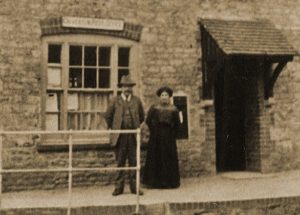
The only other commercial venture was a general store and village Post Office at No. 19 Lower Weald which was run by the Post Mistress Alice Cowan (nee Taylor ) from 1936 until she retired in 1962. The business was taken over by the Shoulder of Mutton the following year and continued into the early 1980s.
From MKC Character Statement for Calverton by Martin Ellison, Brian Giggins and Nick Crank (with additions by David Muston)